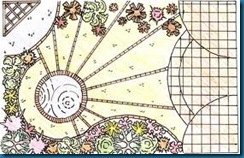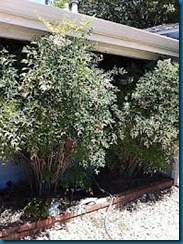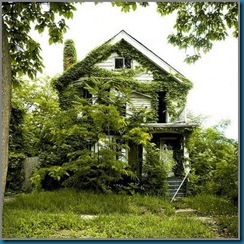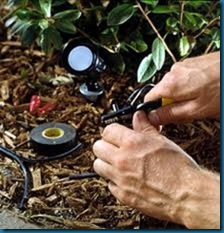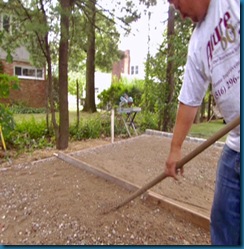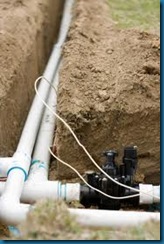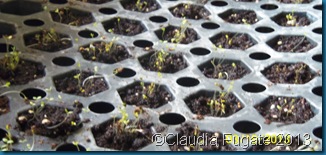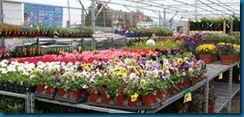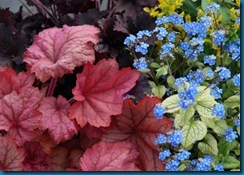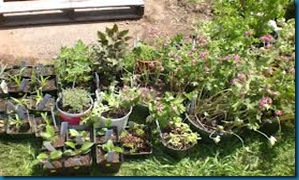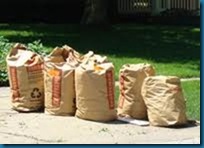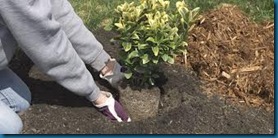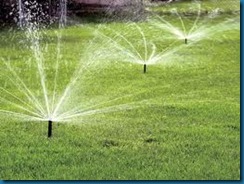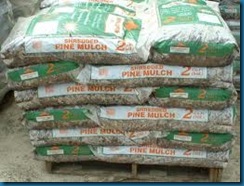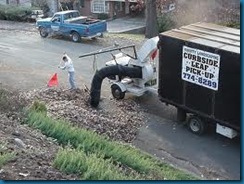May flowers are getting all of the attention right now. And in the next few weeks this explosion of color will be spectacular! As you see bright purples, pinks, and yellows pop up, if you are like me, you will head to the garden center to obtain the 'perennial of the week'. Just be aware that in a few weeks, perennials blossoms will fade and you will just have the foliage to view in the landscape.
Beyond the blooms will be months of what can be a landscape full of interest, textures, contrasts, and soothing colors. As the progression of flowers comes and goes, think about the setting, not as a Monet, but as a sunrise or sunset. The swirls and blends of soothing shades of leaves will be a delight. And who doesn't like to view a sunset?
When choosing plants the foliage and textural contrasts play an important role in the overall feeling of the garden. Wide leaves next to light airy fronds or light colors beside dark shades all complement the eye. The low round plant next to a tall, spikey one will go a long way to add interest to your yard.
Beyond the blooms will be months of what can be a landscape full of interest, textures, contrasts, and soothing colors. As the progression of flowers comes and goes, think about the setting, not as a Monet, but as a sunrise or sunset. The swirls and blends of soothing shades of leaves will be a delight. And who doesn't like to view a sunset?
Bright
leaves of heuchera are brilliant examples of color available in foliage plants. I've grouped these closely so the shading will play off of its neighbor. A mass planting , say five or seven plants, of just one of these would be an eye catching element in the garden, too.
Ferns and Hosta (this hosta is H. Gin and Tonic) work in the shady garden. The broad leaves of the hosta and the light, airy fern compliment each other well.
This combination of Catmint (Nepeta), with its small leaves, and open clump, sits next to Hosta, and a large Sycamore Tree. The tree trunk bark has alot of texture and adds to the tapestry . The Sunny spot behind the tree is a Gold Thread Juniper.  Don't forget to consider year-round interest when placing plants in the garden. Our winters can be long and cold here in Zone 5b, and the evergreens and tree trunks put on a show all year long!
Don't forget to consider year-round interest when placing plants in the garden. Our winters can be long and cold here in Zone 5b, and the evergreens and tree trunks put on a show all year long!
 Don't forget to consider year-round interest when placing plants in the garden. Our winters can be long and cold here in Zone 5b, and the evergreens and tree trunks put on a show all year long!
Don't forget to consider year-round interest when placing plants in the garden. Our winters can be long and cold here in Zone 5b, and the evergreens and tree trunks put on a show all year long!
The bright contrast of the euonymous is a year round event, too. The chartreuse next to the deep green is stunning. I've tucked a Hosta in the mix here. The large leaf of the Hosta, and the smaller leaves of the euonymous have a nice effect.( And note: no flowers!)
Some other elements that offers visual texture to the landscape are stones and boulders.
The rocks have an edge, and the plant material tucked up close, softens the edges for a calming feeling.
When choosing plants the foliage and textural contrasts play an important role in the overall feeling of the garden. Wide leaves next to light airy fronds or light colors beside dark shades all complement the eye. The low round plant next to a tall, spikey one will go a long way to add interest to your yard.
Veriagated foliage, as in this Loriope, can bring a brightness to a group of plants and offer its own sublety.
It may not scream 'Look at me!' but the minds eye will quietly appreciate the effort.
I've presented an insight to my psyche. I like the long term relationship of plants. I love the blooms when they are here, but the steadfastness of the full season soothes any loss I feel beyond the blooms. Enjoy.







